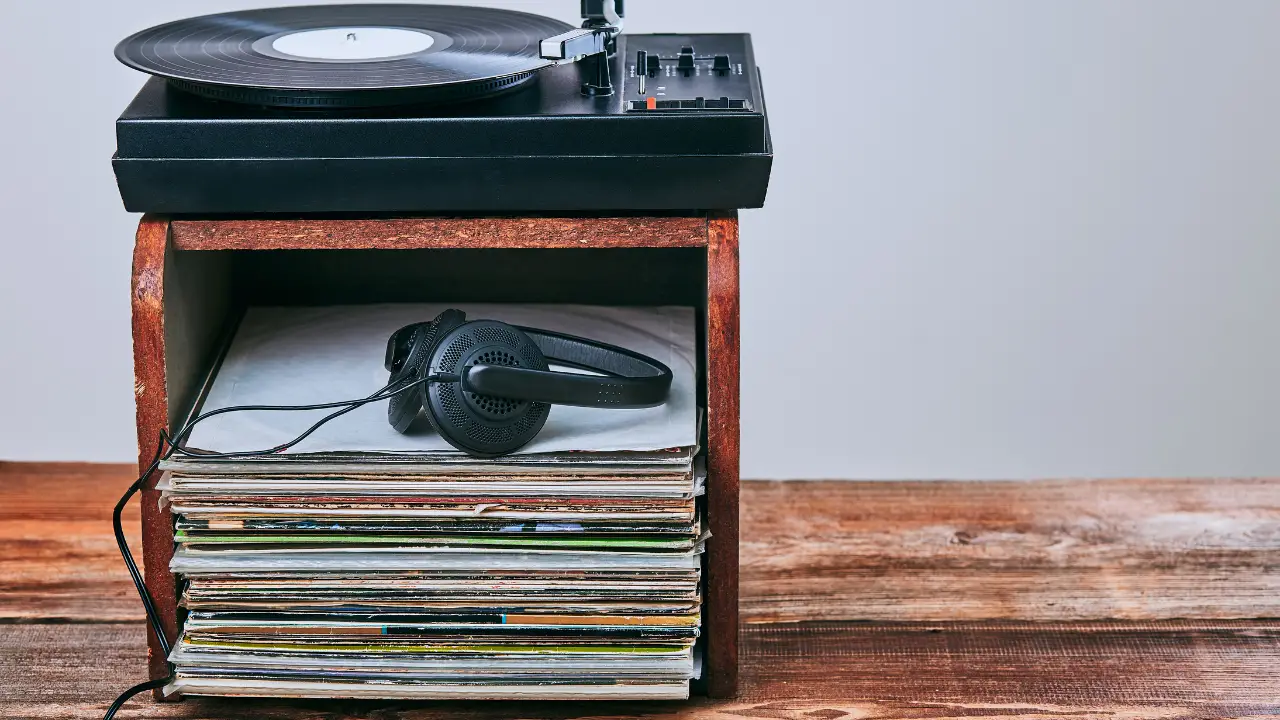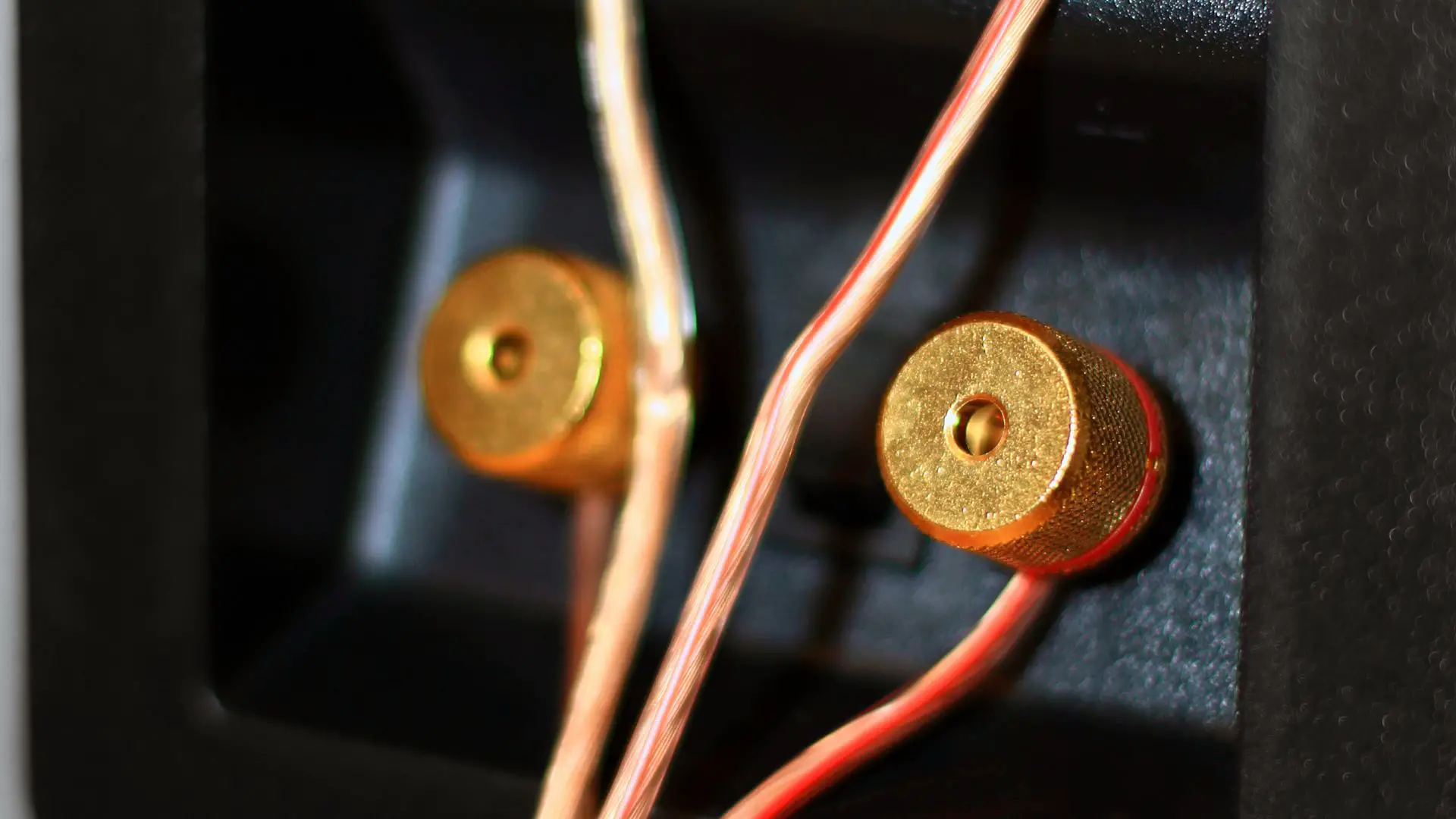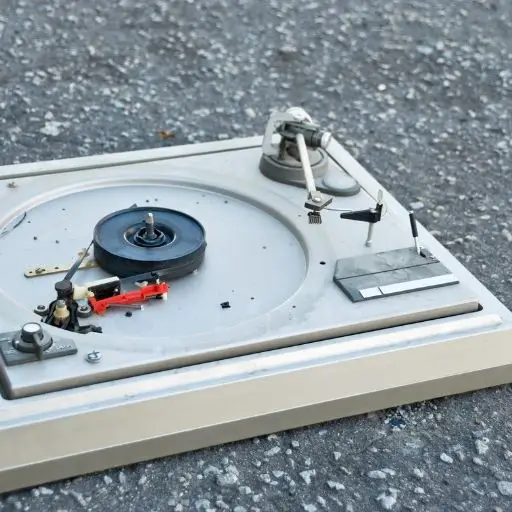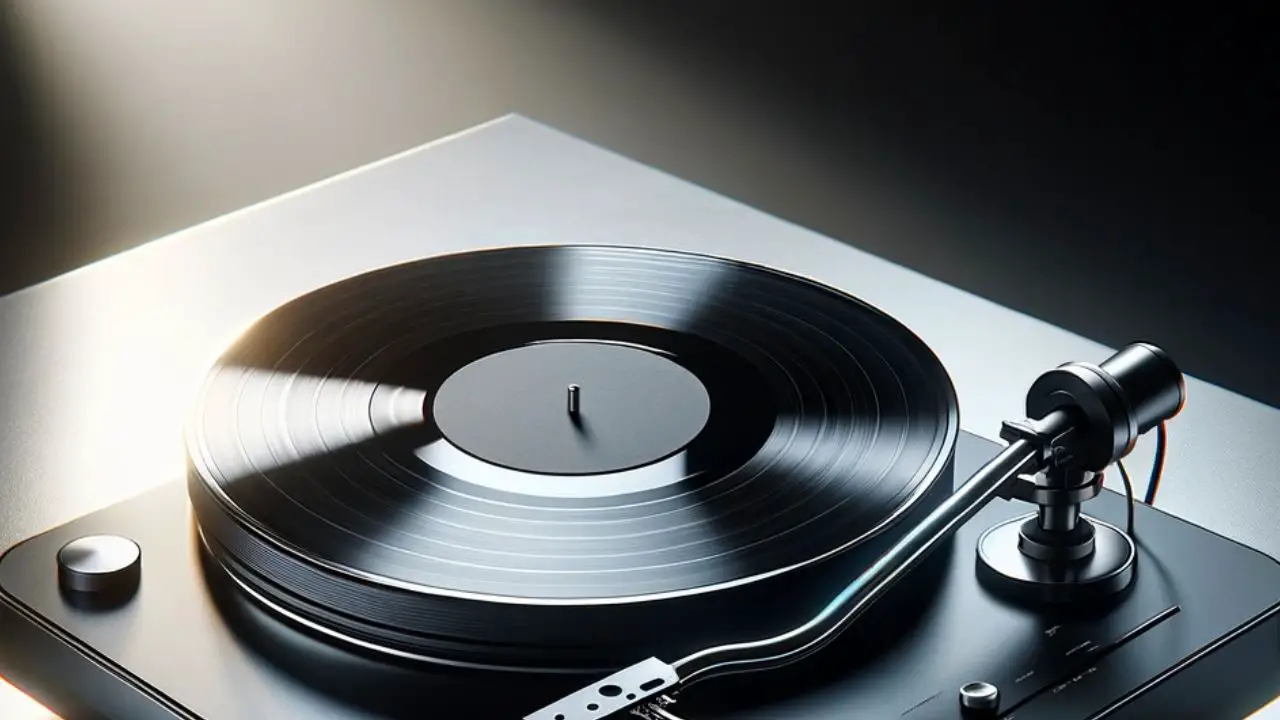Are you tired of sifting through stacks of vinyl records to find your favorite album? Do you find it challenging to keep track of your growing collection? Organising and cataloging your vinyl record collection can be a challenging task, but it doesn’t have to be. With the right tools and techniques, you can easily manage your collection and find the record you’re looking for in no time.
The first step to organising your vinyl record collection is to decide on a system that works best for you. One popular method is to organize your records alphabetically by artist or band name. This method is straightforward and easy to maintain, making it ideal for collectors with a broad taste in music. Alternatively, you can organize your records by genre, year, or label. Whatever system you choose, make sure it’s one that you can stick to and that makes sense to you.
Table of contents
Understanding Vinyl Records
Vinyl records have been around for over a century, and they remain a popular format for music lovers. Unlike digital music, vinyl records are physical objects that require careful handling and maintenance. Here are a few things to keep in mind when it comes to understanding vinyl records:
Size and Speed
Vinyl records come in three sizes: 7-inch, 10-inch, and 12-inch. The most common size is the 12-inch LP, which can hold around 22 minutes of music per side. The speed at which a record plays is measured in revolutions per minute (RPM). Most records play at either 33 1/3 RPM or 45 RPM, although some older records play at 78 RPM.
Grooves and Sound Quality
Vinyl records work by using a stylus to read the grooves on the surface of the record. The grooves contain the audio information, which is then amplified and played through speakers. The quality of the sound on a vinyl record depends on a number of factors, including the mastering process, the quality of the pressing, and the condition of the record itself.
Cleaning and Maintenance
Proper cleaning and maintenance are essential for keeping your vinyl records in good condition. Dust and dirt can accumulate on the surface of the record, which can cause pops, clicks, and other unwanted noise. To clean your records, use a specialized cleaning solution and a soft-bristled brush. Always handle your records by the edges and avoid touching the surface of the record with your fingers.
Storage and Organization
Storing and organizing your vinyl records is also important for their longevity. Keep your records in a cool, dry place away from direct sunlight and heat sources. You can store your records in crates, shelving units, or specialized record storage solutions. When it comes to organizing your records, there are many different methods to choose from, including organizing by genre, artist, or release date. Choose a method that works best for you and your collection.
Setting Up Your Space
When it comes to organizing and cataloging your vinyl record collection, setting up your space is crucial. In this section, we’ll discuss two important aspects of setting up your space: choosing the right environment and storage solutions.
Choosing the Right Environment
The first step in setting up your space is choosing the right environment for your records. Ideally, you want a space that is cool, dry, and away from direct sunlight. This will help prevent warping, fading, and other damage to your records.
Here are a few tips to help you choose the right environment for your vinyl record collection:
- Avoid storing your records in a basement or attic, as these areas are often prone to moisture and temperature fluctuations.
- Keep your records away from windows and other sources of direct sunlight, as UV rays can damage the vinyl and artwork.
- If possible, choose a room with a consistent temperature and humidity level. Fluctuations in temperature and humidity can cause warping and other damage to your records.
- Consider investing in a dehumidifier or air purifier to help regulate the environment in your record room.
Storage Solutions
Once you’ve chosen the right environment for your vinyl record collection, it’s time to think about storage solutions. There are a variety of storage options available, from basic shelving units to custom-built record cabinets.
Here are a few things to keep in mind when choosing a storage solution for your vinyl record collection:
- Make sure your storage solution is sturdy and can support the weight of your records.
- Consider investing in storage solutions that allow you to easily access and flip through your records, such as open shelving or crates.
- If you’re short on space, consider vertical storage solutions like wall-mounted shelves or bookcases.
- Keep your records organized by artist, genre, or alphabetically to make it easy to find what you’re looking for.
- Avoid stacking your records too tightly, as this can cause warping and damage to the vinyl.
Choosing the right environment and storage solutions for your vinyl record collection, you’ll be well on your way to creating a space that is organized, functional, and enjoyable to spend time in.
Organizing Your Records
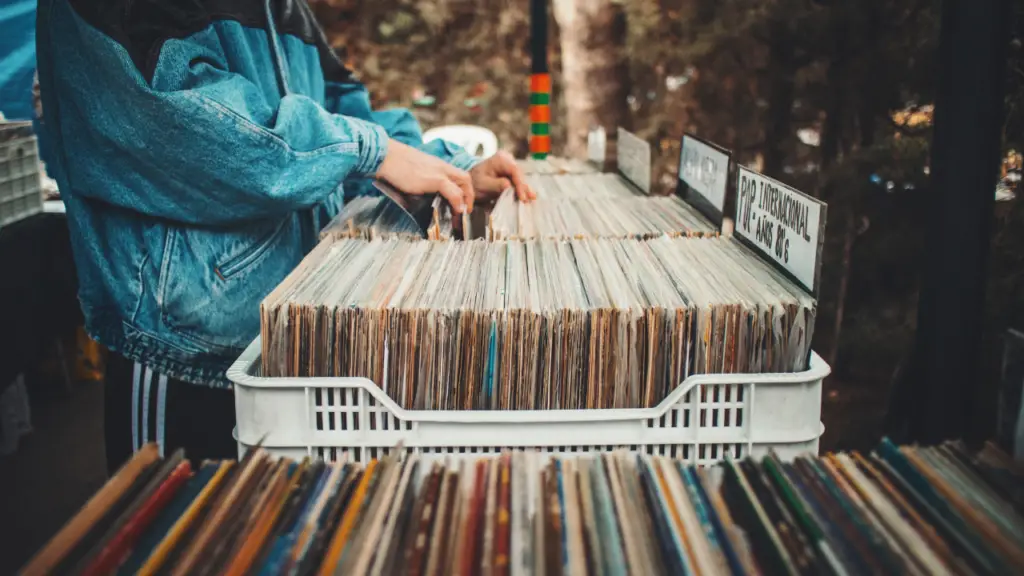
When it comes to organizing your vinyl record collection, there are several methods to choose from. Here are three popular ways to organize your records:
Alphabetical Order
Organizing your records alphabetically is a classic method that never goes out of style. This method involves sorting your records by the artist’s name or the band’s name in alphabetical order. This way, you can easily find a specific album or artist by simply scanning through your collection.
To organize your records alphabetically, you can use dividers to separate each letter of the alphabet. You can also use software like Discogs to create a digital catalog of your collection and sort it alphabetically.
Genre Classification
If you have a large collection of records, organizing them by genre is a great way to keep things organized. This method involves sorting your records by music genre, such as rock, jazz, hip hop, or classical.
To organize your records by genre, you can use dividers to separate each genre. You can also use software like Discogs to create a digital catalog of your collection and sort it by genre.
Chronological Order
Organizing your records chronologically is another popular method that can be useful if you want to see how an artist’s sound has evolved over time. This method involves sorting your records by the year they were released.
To organize your records chronologically, you can use dividers to separate each year. You can also use software like Discogs to create a digital catalog of your collection and sort it by release date.
The best method for organizing your vinyl record collection is the one that works best for you. Whether you choose to organize your records alphabetically, by genre, or chronologically, the most important thing is to have a system that makes it easy for you to find the records you want to listen to.
Cataloging Your Collection
When it comes to organizing and cataloging your vinyl record collection, creating a database is a great way to keep track of your collection. You can create a database using a spreadsheet program like Microsoft Excel or Google Sheets, or you can use cataloging software designed specifically for vinyl record collections.
Creating a Database
If you choose to create a database using a spreadsheet program, you can create columns for the artist, album title, label, year of release, condition, and any other relevant information you want to keep track of. You can also create separate sheets for different genres or categories within your collection, making it easier to find what you’re looking for.
When creating your database, it’s important to be consistent in how you enter information. For example, if you enter an artist’s name as “The Beatles” in one entry, make sure you enter it the same way in all other entries. This will make it easier to sort and search your database.
Using Cataloging Software
If you prefer to use cataloging software designed specifically for vinyl record collections, there are several options available. Some popular options include Discogs, Music Collector, and CLZ Music.
These programs allow you to scan the barcode on your record to automatically add it to your collection, or you can enter the information manually. They also allow you to add additional information such as album art, track listings, and personal notes.
One advantage of using cataloging software is that it can automatically update the value of your collection based on current market prices. This can be helpful if you’re looking to sell or insure your collection.
Maintaining Your Collection
Keeping your vinyl record collection in good condition is essential to ensure that it lasts for years to come. Here are some tips on how to maintain your collection:
Cleaning Techniques
Regular cleaning of your vinyl records can help maintain their sound quality. Use a carbon fiber brush to remove any dust or debris from the surface of the record before playing. For a deeper clean, use a record cleaning solution and a microfiber cloth to gently wipe the surface of the record in a circular motion. Avoid using paper towels or abrasive cleaning materials that can scratch the surface of the record.
To prevent static buildup, use an anti-static record brush before and after playing your records. This will help reduce any pops or crackles that can occur during playback.
Handling Tips
Proper handling of your vinyl records is crucial to avoid damage. Always handle your records by the edges and avoid touching the surface of the record with your fingers. Fingerprints and oils can cause damage to the surface of the record and affect the sound quality.
When storing your records, make sure they are stored vertically and not stacked on top of each other. Storing records horizontally can cause warping and damage to the records. Use record sleeves to protect the surface of the record from dust and debris.
In addition, avoid exposing your records to extreme temperatures or direct sunlight. High temperatures can cause warping and damage to the records, while direct sunlight can cause fading and discoloration.
Appraising Your Collection
Once you have organized and cataloged your vinyl record collection, it’s time to appraise its value. Appraising your collection can be a daunting task, but it’s an essential step if you’re planning to sell some or all of your records.
Research the Market
Before you can appraise your collection, you need to research the market and determine the current value of the records you own. You can use online marketplaces, such as eBay and Discogs, to see how much similar records are selling for. You can also check out record stores and talk to other vinyl collectors to get an idea of the current market value.
Consider the Condition
The condition of your records is a crucial factor when it comes to appraising their value. Records in excellent condition will be worth more than those with scratches, warps, or other damage. When appraising your collection, be sure to take the condition of each record into account.
Get a Professional Appraisal
If you have a large or valuable record collection, it may be worth getting a professional appraisal. A professional appraiser will be able to give you an accurate estimate of the value of your collection. You can find appraisers through professional organizations, such as the Appraisers Association of America.
Keep Your Appraisal Up to Date
The value of vinyl records can fluctuate over time, so it’s important to keep your appraisal up to date. If you plan to sell your collection, be sure to appraise it again shortly before you put it on the market. This will ensure that you’re asking a fair price and that you’re not missing out on potential profits.
Overall, appraising your vinyl record collection takes time and effort, but it’s an essential step if you’re planning to sell your records. By researching the market, considering the condition of your records, getting a professional appraisal, and keeping your appraisal up to date, you can ensure that you’re getting the best possible price for your collection.
Insuring Your Collection
Vinyl record collections can be valuable, both monetarily and sentimentally. It’s important to consider insuring your collection to protect yourself in case of damage, theft, or loss. Here are a few things to keep in mind when insuring your vinyl record collection:
1. Determine the value of your collection
Before insuring your collection, it’s important to determine its value. You can do this by creating a detailed inventory of your records, including the artist, title, label, and condition of each record. You can also use online tools like Discogs to get an idea of the value of each record. Once you have a comprehensive list of your collection, you can determine the total value and insure it accordingly.
2. Look for specialized insurance
Not all insurance policies will cover your vinyl record collection, so it’s important to look for specialized insurance that specifically covers collectibles. Some insurance companies offer specialized policies for collectibles, which can include vinyl records. Make sure to read the policy carefully to ensure that it covers the full value of your collection and any potential risks.
3. Consider additional coverage
Even with specialized insurance, it’s important to consider additional coverage for your vinyl record collection. This can include coverage for damage during transportation, loss during a move, or theft. Some insurance policies may offer additional coverage for these types of risks, while others may require you to purchase additional coverage separately.
4. Keep records of your collection
In case of a claim, it’s important to have a detailed record of your vinyl record collection. This can include a comprehensive inventory of your records, as well as any receipts or appraisals. Make sure to keep these records in a safe place, such as a fireproof safe or a secure online storage service.
Insuring your vinyl record collection can give you peace of mind knowing that your valuable collection is protected. By determining the value of your collection, looking for specialized insurance, considering additional coverage, and keeping detailed records, you can ensure that your vinyl record collection is fully protected.
Conclusion
Organizing and cataloging your vinyl record collection can be a daunting task, but it is well worth the effort. By taking the time to properly store and categorize your records, you will be able to easily find the album you want to listen to and protect your collection from damage.
Remember to choose a storage solution that fits your collection size and available space. There are plenty of options available, from furniture and cabinets to shelves and crates. Once you have selected the right storage solution, consider how you want to categorize your records. You can organize them alphabetically by artist or genre, chronologically by release date, or even by color.
When cataloging your collection, use a system that works for you. You can create a spreadsheet or database, use a mobile app, or even handwrite a catalog. Be sure to include important details such as artist, title, release date, and condition. This will help you keep track of your collection and make it easier to find specific records in the future.
Finally, don’t forget to properly clean and maintain your records. Use a record cleaning solution and brush to remove dust and debris, and store your records in a cool, dry place away from direct sunlight and heat sources. With a little time and effort, you can create a well-organized and protected vinyl record collection that you can enjoy for years to come.
Frequently Asked Questions
What are some effective ways to store and protect your vinyl records?
Proper storage and protection of vinyl records is essential to maintain their quality and longevity. Here are some effective ways to store and protect your vinyl records:
- Store records vertically to prevent warping and bending.
- Keep records away from direct sunlight, heat sources, and moisture.
- Use inner sleeves to protect the vinyl from dust and scratches.
- Use outer sleeves to protect the album cover from wear and tear.
- Avoid stacking records on top of each other, as this can cause damage to the records and covers.
How can I create a database or catalog of my vinyl record collection?
Creating a catalog or database of your vinyl record collection can help you keep track of what you own and make it easier to find specific records. Here are some ways to create a catalog or database:
- Use a spreadsheet program like Microsoft Excel or Google Sheets to create a table with columns for artist, album title, genre, and other relevant information.
- Use a dedicated vinyl record cataloging software like Discogs or MusicBee.
- Take photos of your records and create a visual catalog using a photo album app or website.
What are some creative ideas for organizing vinyl records?
Organizing your vinyl record collection can be a fun and creative process. Here are some ideas to get you started:
- Organize records by color to create a visually striking display.
- Group records by genre or sub-genre to make it easier to find specific types of music.
- Organize records chronologically by release date to create a historical timeline of your collection.
- Use a combination of these methods to create a unique and personalized organizational system.
What is the best method for alphabetizing vinyl records?
Alphabetizing your vinyl record collection can make it easier to find specific records. Here are some tips for alphabetizing your collection:
- Use the artist’s last name as the primary sorting criterion.
- Ignore “The” when alphabetizing band names (e.g., “The Beatles” would be filed under “B”).
- Use the album title as the secondary sorting criterion if two artists have the same last name.
Are there any apps or software specifically designed for cataloging vinyl record collections?
Yes, there are several apps and software programs specifically designed for cataloging vinyl record collections. Some popular options include Discogs, MusicBee, and VinylBase.
How can I efficiently store and organize hundreds of vinyl records?
Storing and organizing a large vinyl record collection can be a daunting task. Here are some tips to make the process more manageable:
- Break the collection down into smaller sections and tackle one section at a time.
- Use storage solutions like record crates, shelves, or cabinets to keep the collection organized and easily accessible.
- Consider digitizing your collection to free up physical storage space while still being able to enjoy your music.

